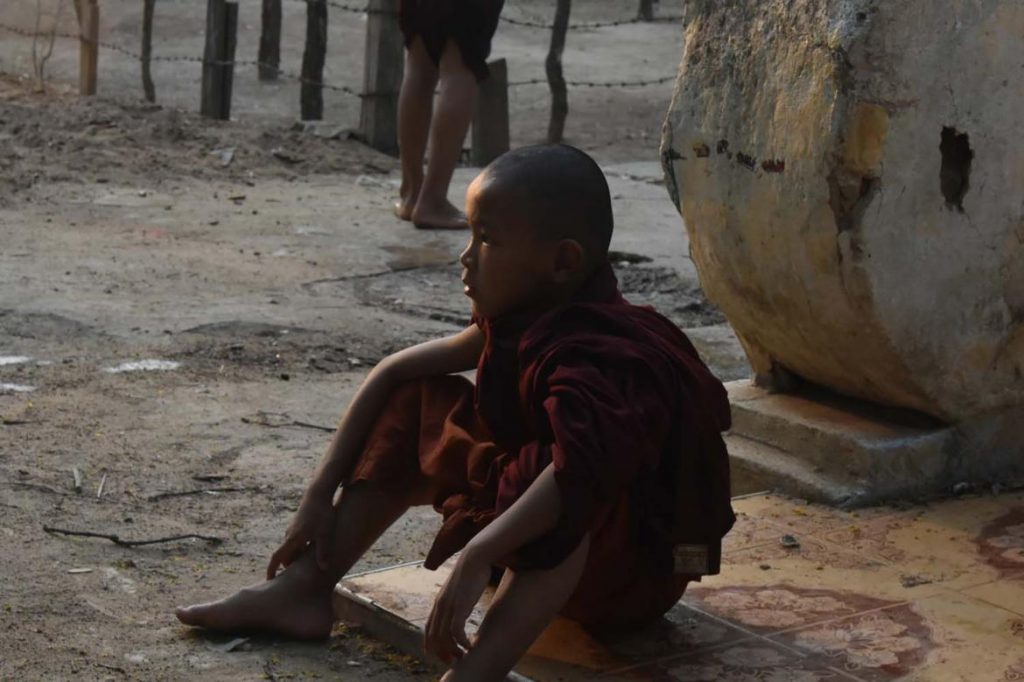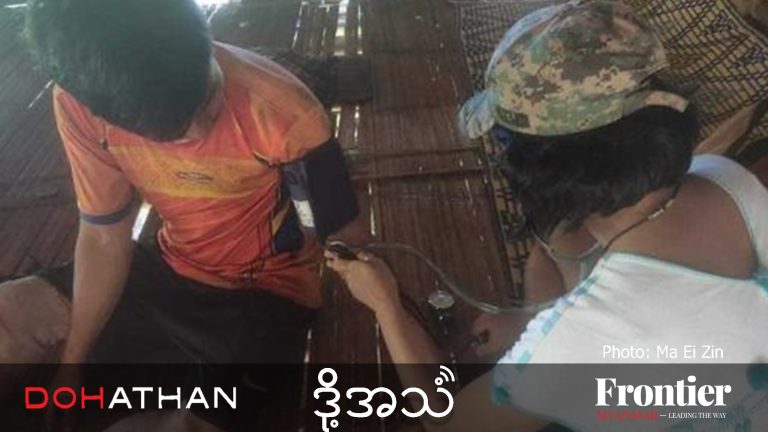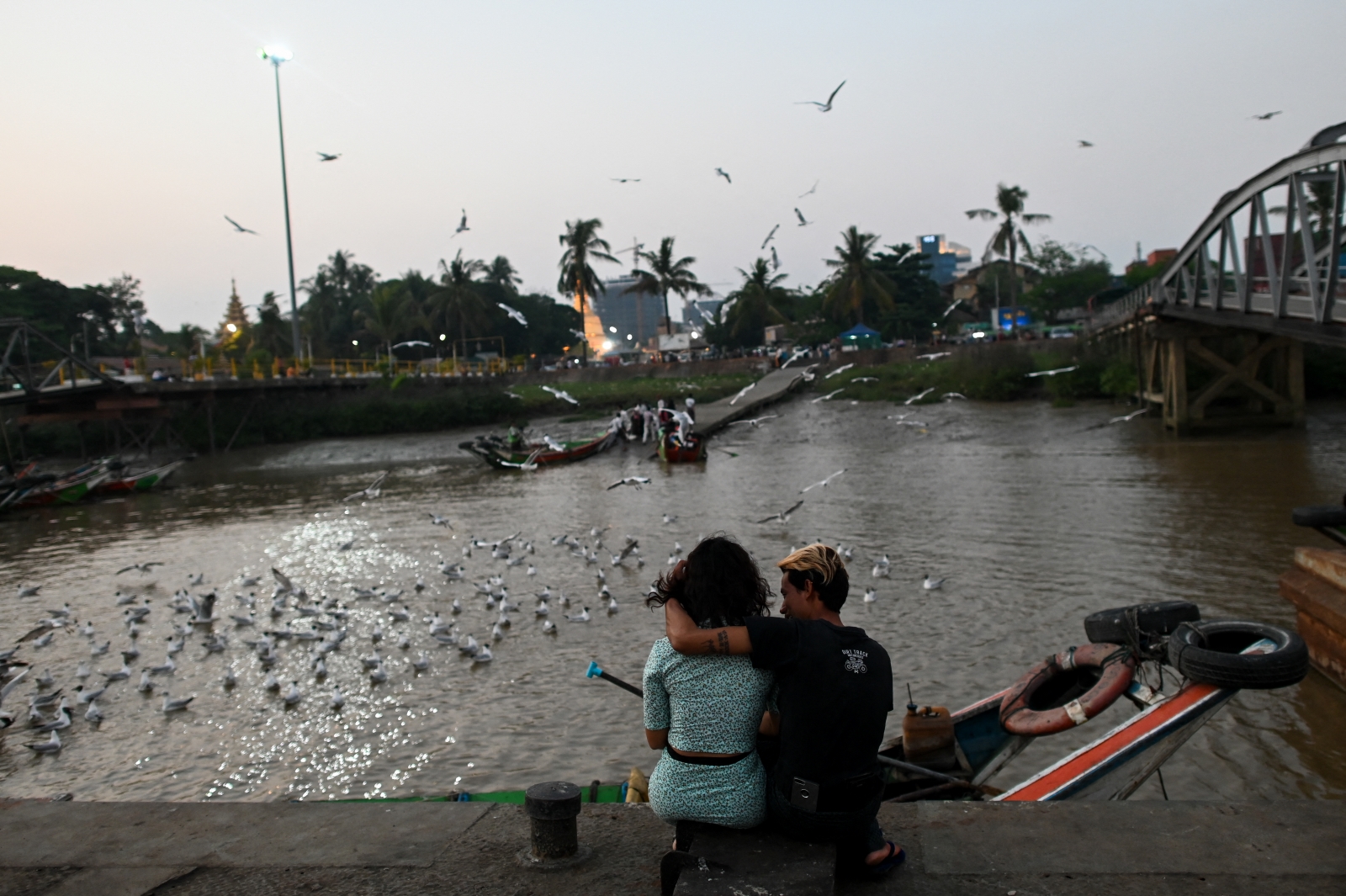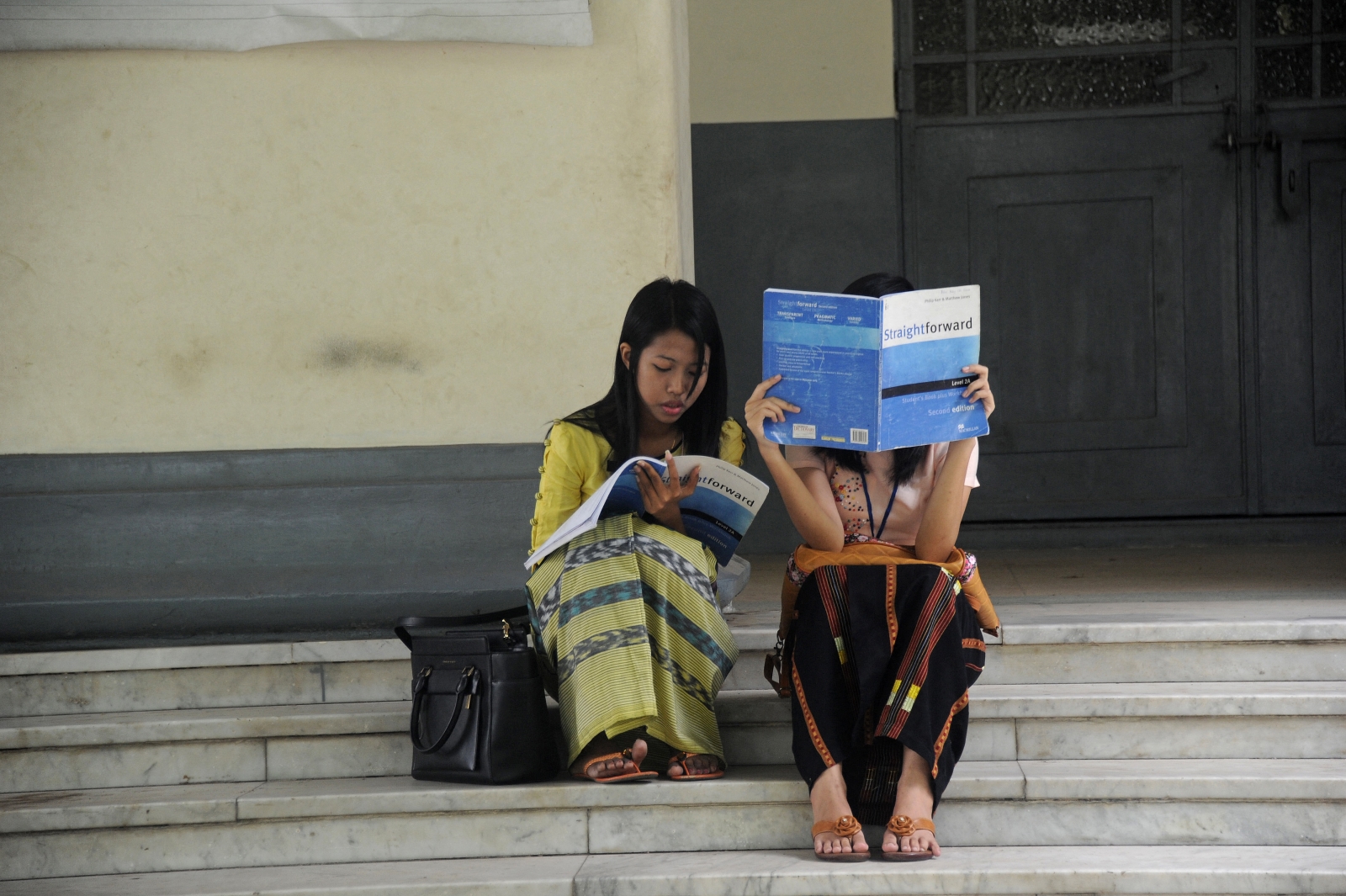A monastic school in central Myanmar provides an education mainly for ethnic minorities from the country’s volatile border regions.
By HEIN KO SOE | FRONTIER
IN 2014, after fighting flared in his hometown of Kyaukme, northern Shan State, Sai Laung Kham’s parents sent him 350 kilometres (217 miles) across the country, to attend a monastic school in Pakokku, Magway Region.
There are an estimated 1,300 monastic schools in Myanmar, show Ministry of Education figures for 2017, but the Sanit Thit Phahtoe school, located in the centre of Pakokku – which is located in the middle of the country’s Bamar-majority heartland – is unlike most others; it provides a monastic education almost exclusively to those displaced by war in the country’s volatile border regions.
A native Shan speaker, Laung Kham said he struggled when he first arrived at the school.
“I tried to learn the Myanmar language when I arrived, but it was very difficult for me, and I didn’t like it at first,” Laung Kham told Frontier in the picturesque monastery grounds. “But it isn’t difficult for me anymore,” he said.
Support more independent journalism like this. Sign up to be a Frontier member.
Laung Kham is enjoying life at the school now. When Frontier visited in April he was playing sepaktakraw in the monastery’s garden with about a dozen friends, who were a mixture of different ethnicities including Shan, Palaung, Pa-O and Chin.
The Sanit Thit Phahtoe monastic school was founded in 2014 by the Venerable Kolsalla. He had been inspired to open the school after meeting the founders of the famed Phaung Daw Oo monastic school in Mandalay, the country’s largest, which is home to an estimated 9,000 students. Sanit Thit Phahtoe has close ties with the Mandalay centre of learning, and some of its students sit their exams there.
When it opened, Sanit Thit Phahtoe provided an education for 24 ethnic minority students who had been transferred from Phaung Daw Oo, but today it teaches 120 students, the vast majority of which are from ethnic minority areas. More than half of the students are novice monks, and the rest are nuns.
Sanit Thit Phahtoe is not Kolsalla’s first experience of overseeing a monastic school in Pakokku. In 1992, he founded Ashae Tike monastic school, which taught 70 novice monks in the town. However, authorities forced it to close after some of its students were heavily involved in the anti-government uprising in 2007 that became known as the Saffron Revolution, a movement that started in Pakokku.
Kolsalla said that some of the monks who were students at his original school have returned to lay life, while others are monks at other monasteries around the country.
Sanit Thit Phahtoe has seven paid teachers, who earn a monthly salary of K60,000, and another three are Kolsalla’s relatives, who work voluntarily.
Ma Chaw Su Khaing is a volunteer teacher at the school, and teaches Grade 5. A relative of Kolsalla, she said she volunteers because she wants to help provide opportunities for those from some of the poorest parts of the country.
“Although we sometimes have difficulty communicating with them [because of the language barrier], we never neglect them because in the past they have faced difficulties,” she said.
Many of the students at the school speak Shan, Palaung or Pa-O, said Daw Soe Soe Khine, who teaches primary school students at Sanit Thit Phahtoe.
“When they reach the monastery we have to teach them the Myanmar language,” said Soe Soe Khine “After that we have to teach other subjects. The first step is very difficult because they often do not speak the Myanmar language,” she said.
The school follows the Myanmar government curriculum, and other subjects taught include mathematics, geography, physics, chemistry and English.
Kolsalla said that the main objective of the school was to ensure that after graduation students can get jobs in order to support their families.
“I don’t want them to return to the difficulties they faced in the past, so I try to provide the best opportunities in the future for my students,” he said. “I want to show that we are united [as a country], and everyone should be treated equally for a better future for all,” he said.
Laung Kham said he hoped that after graduating he can return to his home town and provide for his family.
“My parents sent me here, but I go back [to Kyaukme] during the summer holiday. I just want to study and make sure I can graduate,” he said.







